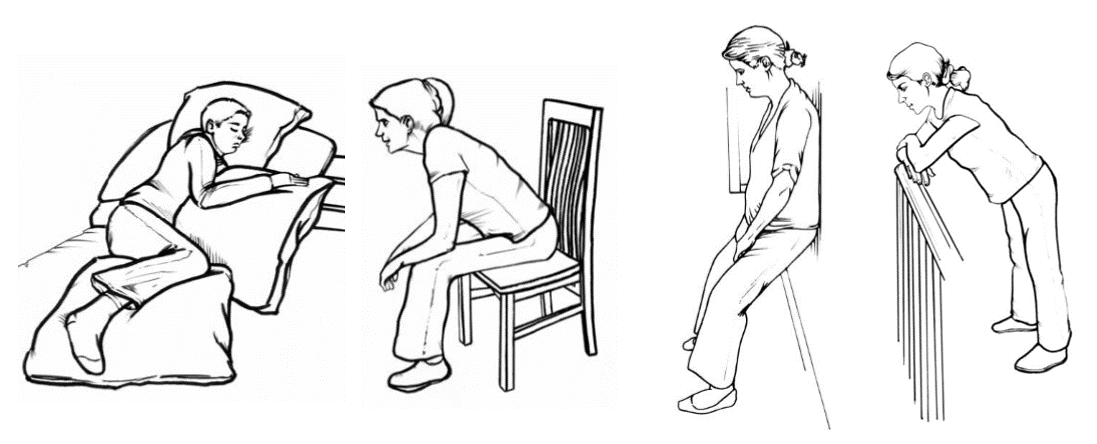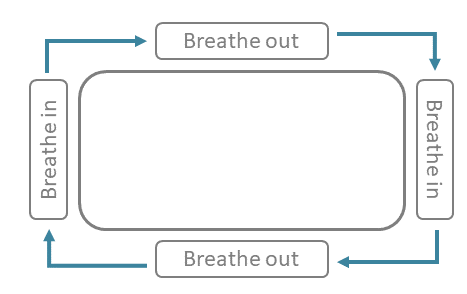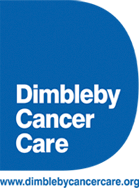Pick and choose the strategies below you think will work for you. Try to practice these when the person you support is feeling ok. Remember many of these strategies can be used anywhere – whether you are home or out and about.
Handheld fan / cool moving air
A handheld fan looks very simple but it’s a very good way to get cool air on the person’s face when they are breathless. Cool air on the face is a way to calm down and relax and can reduce breathlessness. A handheld fan with three, soft paddles is recommended, although any type of fan can be helpful.
Get them to hold the fan in close to their face and mouth, and slowly move the fan from side to side, making sure the flow of air covers the nose, mouth and cheeks. They can also use this fan while using nasal oxygen. While they use the fan, encourage them into a comfortable position that eases breathlessness. See below for more ideas on positions to ease breathlessness.
You can also watch a video on how to use a handheld fan to reduce breathlessness over on the Breathlessness Intervention Service (BIS) website.
You can also try cooling their face with cool flannels or a water mist spray.
Positions to ease breathlessness
There are many different positions you can encourage the person you support to try that may help relieve breathlessness. There are resting positions, positions after activity and positions using walking aids.
There is no one position that works for everyone, so experiment and find out which suits them best. Ask them to try sitting or standing, leaning onto something like a rail or chair or leaning back onto a wall.
Leaning forward is often helpful for people with breathlessness. There are lots of ways you can use this position when doing everyday tasks. For example, using a trolley often helps people walk for longer without becoming breathless when out shopping. Walking frames can help in the same way too. There are kinds of exercise equipment like bikes, that also encourage leaning forward and can help exercising with breathlessness.
Some examples of positions you can encourage them to use that relieve breathlessness:
 (Images sourced from the Breathlessness Intervention Service (BIS) website)
(Images sourced from the Breathlessness Intervention Service (BIS) website)
See some more ideas of positions that can help ease breathlessness from the Breathlessness Intervention Service (BIS) website.
Rectangle breathing
Rectangle breathing is a technique you can use with the person when they may be feeling panicked or breathless. It can help to look at something with a rectangle shape while doing this breathing such as a picture or mirror frame, computer screen, a door or even a book.
Start by trying to breathe from your stomach, and as you do, follow the sides of the rectangle with your eyes. Try to slow the speed of your eyes to follow the edge of the shape of the rectangle and to slow your breathing, breathing out along the long edge, and breathing in along the short edge.

The feelings of panic and breathlessness may not fully go away after using this technique only once, so encourage them to use it several times until the panic has goes away – go round and round the edge of the rectangle. Encourage them to practice.
Medication
Make sure they uses their reliever inhaler if they have one. If this makes their mouth dry, sipping cool water can help.
Your healthcare professional can also recommend the best ways to use inhaled medications that may help.
Acupressure
Acupressure involves putting pressure on specific points of their body which can be helpful when they are feeling anxious and stressed.
Using the palm of your hand, firmly stroke down either one of their arms all the way to the end of the thumb. Also try rubbing the top-middle of their back.
Watch a short demonstration on how to use acupressure to relieve stress and breathlessness in the video below
Relaxation
It’s important for you and the person you support to relax and manage stress every day, not just during times of breathlessness and panic. This can make sure that your baseline, day to day levels of stress are lower and may mean that having a panic or breathless episode is less likely.
It can help to do things like listening to ‘body scans’ and ‘guided visualization’ relaxation exercises together.
Try the ‘Letting go’ relaxation script from the Breathlessness Intervention Service (BIS).
The Breathlessness Intervention Service (BIS) and Macmillan Cancer Support also have other relaxation exercises that can be helpful for anyone with breathlessness. There are many other relaxation exercises you can find by searching on the internet, especially YouTube.
Click here for a printable version of this page (PDF, 478KB)
Would you like to look at another support topic?
Page last reviewed: 15/12/2025


